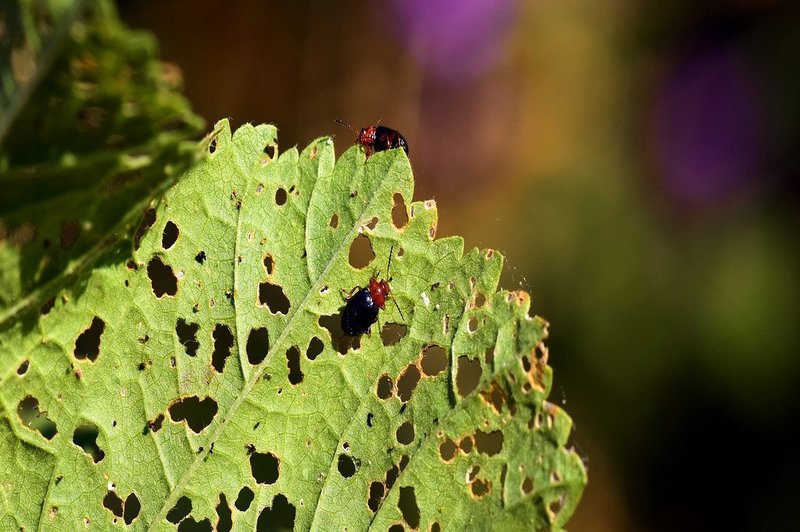Seeing that pest control was already slowly shifting to more safe options, it’s time to know how does behavioral control manage pests so that you can have a ready alternative at hand.
There are other options than behavioral control, such as cultural control, but this article would specifically explore all about the former. Keep on reading to know more.

Pest Control
A pest, according to Britannica, is an organism that is considered a threat to people and other things. These creatures are regarded as competitors of people for a specific location, and they can be pretty invasive and destructive.
Here are some common indoor pests:
- Ants
- Bed bugs
- Beetles
- Carpenter ants
- Centipedes
- Cockroaches
- Crickets
- Earwigs
- Fleas
- Flies
- Mites
- Mosquitoes
- Moths
- Rodents
- Silverfish
- Spiders
- Stinging pests
- Stink bugs
- Termites
- Ticks
- Wasps
It depends on the plants or crops you have and what can attract the outdoor pests. Still, here are some examples of the common ones:
- Birds
- Caterpillars
- Critters
- Slugs
- Snails
- Aphids
- Flea beetles
- Alder leaf beetles
- Codling moths
- Thrips
- Mealy bugs
- Moles
- Vine weevil
- Leaf miners
- Fuchsia gall mites.
Knowing that they aren’t good for your environment and health, it’s best to know pest control methods you can utilize on your own. Hiring professionals to do these tasks was more advisable.
Pest control is the management of creatures considered pests, which are perceived as harmful to humans, pets, crops, and properties. It is the task of regulating destructive pests to reduce or prevent their damage.
There are many proven and effective methods one can use to eliminate and deter pests, such as biological, chemical, cultural, physical. In this article, we’ll explore a specific way, which is behavioral control against pests.
Learn more by visiting this article about should I try pest prevention first before pest control.
Behavioral Control Against Pests
The use of pesticides, although practical, can cause negative impacts on those who use them and the environment. In agriculture, prolonged usage of pesticides can cause deterioration in farmers’ health, it can also deter beneficial insects, and pests get invulnerable to it.
Many were already seeking a safer option; behavioral manipulation of the targeted pest is one of those. Some examples of the behavioral control technique are the following:
Method #1. Kairomones
Kairomone is a chemical substance discharged by an organism. This can be used to attract species that could antagonize certain pests, lure pests to a location that wouldn’t benefit them, or even bring these pests where one applied pesticides or traps.
Method #2. Pheromones
Pheromones are chemicals emitted by organisms to intercommunicate with the same species.
Specific pheromones could attract pests, and those are applied to a trap. With this, you can observe and detect immediately if there is an infestation in your location.
There are specific pheromones for different kinds of pests; you’ll have to consider what type of pest might be developing in your area, then proceed to know what pheromone could attract them. Hence, it’s best to do your research or leave this to a professional.
Method #3. Vibrational signals
It is proven that vibrational signals can disrupt the matings of insect pests. This method can keep the population of insect pests from increasing.
This method is not only effective but also environmentally friendly.
Method #4. Food attractant
This is a simple method, which would only require you to have food baits. Include this with a pest trap; then, while attracting pests to this food bait, they’ll get stuck on the trap.
Method #5. Mass trapping
This method involves the usage of mass trapping kits which are cheap but can last for a long time. It can reduce the number of pests, which one can also use alongside other methods.
Method #6. Repellents
This method uses chemicals that make pests move away from certain areas where you place the repellents. It is very effective to deter these little creatures from damaging your property, the environment, and so on.
To understand the methods mentioned above, you can visit this educational article about cultural and behavioral control methods.
How does behavioral control help?
It eliminates the risk of illnesses while still being able to manage pests. There were also many choices for techniques one can choose under these behavioral control methods, so you can guarantee that something would work for what you need.
It is also an eco-friendly approach for eliminating pests. It promotes the usage of natural or artificial products, such as those mentioned earlier, kairomones, pheromones, vibrational signals, food attractants, and mass trapping.
In agriculture, it won’t affect the crops and the yield of their plants. Farmers and gardeners can also rest assured that they won’t compromise their health.
The idea of controlling specific pests using some stimulus can assure that the beneficial insects and the environments wouldn’t be affected. If done correctly, surely you’ll benefit from this method.
If you’re interested, you can read this article about what is integrated pest management.
Conclusion
In conclusion, like other pest control methods, there are many techniques under behavioral control that are effective but much safer. The choice now is yours, whether you find this method better or not, if you’ll use this or another.
Hopefully, this article was able to assist you in seeking the answer to how does behavioral control manage pests.
